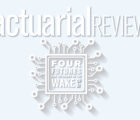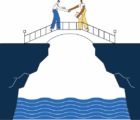
Looking through the schedule of the 2024 Casualty Loss Reserve Seminar (CLRS), it is clear that the hot topic of rapidly evolving technology and artificial intelligence (AI) is on everyone’s minds. One of the general sessions of the seminar featured this very topic, inviting a panel of experts to discuss in depth how rapidly evolving technology impacts reserving from a current and future perspective. The panel included:
- Brian Fannin, ACAS, CSPA, an actuary at Akur8 who discussed evolving technologies and techniques.
- Larry McClure, FCAS, chief actuary at SCOR Re, who discussed the implications at a company management level.
- Julie Lederer, FCAS, MAAA, an actuary and regulator with the Missouri Department of Commerce and Insurance, who discussed the regulatory implications.
- Carver Roya, FCAS, MAAA, an actuarial partner/principal at PwC, who discussed the audit implications.
- Rich Gibson, FCAS, MAAA, Senior Casualty Fellow at the American Academy of Actuaries, who moderated the session.
Reserving lags behind pricing
To set the context of where reserving processes are today, the panel had an active discussion as to why the adoption of new technologies and techniques is not as widespread in reserving compared to their counterparts in pricing, despite the technology and techniques that are available and at their fingertips.
A lot of it comes down to the amount of lift that can be attained from adopting advanced techniques. Is the final reserve estimate going to be materially better than the estimate developed through traditional techniques? Will there be materially more time and resources saved to get to the final answer? There is a higher lift in a few more percentage points of accuracy in price, which translates more directly to the operating results than a few more percentage points of a difference in reserve estimates. Additionally, premium is generally set in stone from when a policy is bound until its expiration whereas reserving can be refined every quarter, half-year, etc.
Adoption of advanced techniques is also hard when many reserving actuaries are still living in a predominantly Excel world.
Adoption of advanced techniques is also hard when many reserving actuaries are still living in a predominantly Excel world. Excel doesn’t scale well, is not made for data science, and is relatively inefficient compared to other tools. Data quality is also paramount, and the models that are built are only as good as the data that goes into it. Investment in new tools and data infrastructure can be a tough sell. Back to the point on lift, it’s hard to get buy-in to invest resources and time into new tools if there isn’t a clear lift in results.
Interpretability is also another barrier. ASOP 36 says that for the Statement of Actuarial Opinion (SAO), the actuary needs to state who the intended users are. Usually that’s a non-actuarial audience such as management, the board and regulators. In that context, it tends to be easier to go with traditional methods that the audience is comfortable with and can understand.
So, is it an entirely lost cause? Will reserving not be able to jump on the AI and evolving technology train in a meaningful way?
The low-hanging fruit
Even though AI is not at the point where it can help reserving actuaries make best reserve estimates yet, the panelists offered ideas of where AI tools can give reserving actuaries an almost immediate lift in their day-to-day work.
One area is in reporting. Many reserving actuaries spend hours on reports and memos writing, as well as making presentations. A lot of time is also spent on putting data into spreadsheets or updating templates, which isn’t a good use of an actuary’s time or talent. With the help of AI, the time it takes can be shortened drastically.
Another area is in training, which will be discussed in more detail in the next section.
This freed-up time can allow actuaries to focus more on the analysis piece as well as refining their communication and explanation of results to stakeholders.
Actuary of the future
As we look into the future, a question that popped up several times during the discussion is, what does the student of the future look like? The panel highlighted both the opportunities and risks of using AI on this topic.
On one hand, AI offers extensive training possibilities. A few examples were brought up, such as being able to upload a textbook and generate training presentations from AI in a matter of minutes. Another example was that, if there is a document or webpage that is too long to comb through, AI chatbots can be created to answer questions specifically from that source so users won’t have to spend time searching for the answers themselves.
On the other hand, it’s important to keep in mind the implications of over-reliance of AI. An analogy was brought up, likening the use of AI to cooking with a microwave — more likely than not, frequent microwave-users are not typically fabulous cookers or understand the basic techniques of cooking. So even if AI can produce solid reserve estimates, over-reliance may result in a loss of understanding of the underlying models and core actuarial knowledge behind the estimates.
Final reflections
At the end of the session, Gibson invited each panelist to offer their closing thoughts.
Fannin encouraged everyone not to wait when it comes to improving their skills in communicating technical topics to a non-technical audience. These communication skills allow actuaries to build bridges that help themselves and others feel at ease when making decisions based on math and data. He recommended several books every actuary should read, including Storytelling with Data by Cole Knaflic as well as any books by Michael Lewis or Malcolm Gladwell.
Roya wants actuaries to embrace technology but not lose sight of the professionalism and standards of practice that makes actuaries who they are. This can be ensured by putting in good frameworks, governance, controls, and documentation around the new processes in place. Also, it’s important for actuaries to not lose their basic insurance knowledge so they can communicate with their business partners and stakeholders without relying on AI to spit out an answer.

McClure emphasized the importance of a good relationship between actuaries and the management team. Without buy-in and trust from business partners and stakeholders, it is hard to move forward with implementing new processes and models. Where actuaries can add value is by being a fair arbiter of math, having good communication, and walking management through the “before and after” to help them understand and feel comfortable with the investment in the new processes.
Lederer reminded the audience of the ASOPs, particularly ASOP 41 on communication. Section 3.2 of ASOP 41 states, “the actuary should state the actuarial findings and identify the methods, procedures, assumptions, and data used by the actuary with sufficient clarity that another actuary qualified in the same practice area could make an objective appraisal of the reasonableness of the actuary’s work as presented in the actuarial report.” When techniques become more advanced and reserving actuaries move from methods to models, this ASOP will be the key to keep in mind.
As the world charges forward into the era of AI and rapidly evolving technology, there is a strong reliance on actuaries to provide governance and stewardship around its use. By applying the ideas and themes shared by the experts in this session, reserving actuaries will be better equipped to join the rest of the world in exploring this new era.
Sara Chen, FCAS, is a consulting actuary at Pinnacle Actuarial Resources Inc. She is a member of the AR Working Group and Writing Subgroup.













